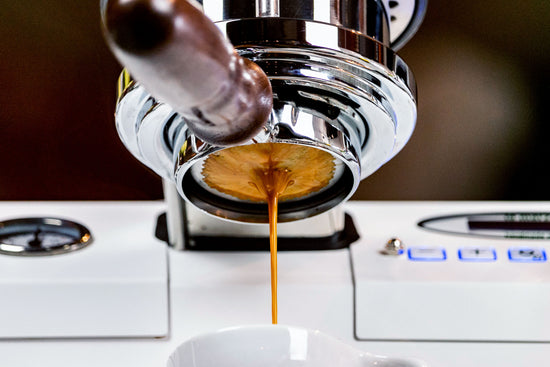Portafilter Baskets - Do They Matter?

While most coffee products compete to look new and different some are constrained by existing standards. Portafilters are a prime example – they all look essentially identical even on close inspection, but the differences in performance can be massive. We can say that, but we wouldn’t blame you if that didn’t convince you to spend money on a forgettable little part that it seems you already own. With that in mind, let’s dive into the details with the video below.
A portafilter basket’s job seems pretty simple: it’s a metal filter designed to be used with ultra-fine coffee and under high pressure. That would be pretty easy if the particles of coffee in your basket were of perfectly consistent size. But from a microscopic perspective, they come in wildly varying shapes and sizes. This is partly how espresso gets its character. The smallest particles can easily make their way through the holes in our metal filter and into your cup, producing a thick, rich espresso. It’s the particles that are slightly larger than those holes that cause problems.
A particle of just the wrong size or shape can clog or obstruct one of these holes. On its own, this doesn’t seem too bad but, odds are, a number of openings will be obstructed during our extraction – sometimes even causing a domino effect on those around them. The result is that those areas behind the obstructions can end up under-extracted, seeing less water flow by them than their neighbors. As always, this produces shots with less clarity in their flavor.
So how can a basket avoid clogs? Well, the particular shape and precision of the holes have a pretty big impact on how likely they are to be obstructed. If the hole is jagged, sharp, and uneven it’s far more likely that a particle of coffee will get stuck on those edges. If the hole is smooth and perfectly circular there’s far less risk of obstruction. This microscopic detail is the difference between a mediocre basket and a world-class one.
So, how do you tell the difference? Well, unfortunately, you can’t tell by looking, unless you have the right kind of microscope. For the most part, we have to rely on experience, reviews, and whatever information the manufacturer will give us. The folks that make our favorite precision baskets, - VST - include a little printed image of the holes in your specific portafilter as proof of their hard work.
Instead of investing in our own microscope, we put a couple of baskets head-to-head to see which one would deliver more consistent results. We used the same machine, grinder, coffee, and Saint Anthony Industries depth calibrated tools. Further, we alternated between the two baskets to keep the difference in time as small as possible. For our standard basket, we used the OEM basket that comes with our Style 7 Bottomless portafilters. For our precision option, we went with the VST 20g basket. Alternating between the two we pulled a total of 40 shots (20 for each basket) stopping them all at 25 seconds. Further, we noted any channeling on a scale of “none,” “some,” or “heavy.”
The results drew a stark conclusion: VST baskets produce significantly more consistent results than OEM baskets. Here we’ve plotted the data for each shot as a deviation from the target yield. As you can see, there’s a lot more variation in the shots produced with the standard basket when compared to the VST. A statistical analysis of the deviation from the mean shows that the VST basket had less than half the variability of the standard one.

Looking closer, you can see that the general shape of the curves match, largely correlating to changes in the level of beans in the hopper. While this will cause variation with any grinder and any given coffee, you can see that the VST basket mitigated this disturbance.
When comparing the amount of channeling produced by each basket there’s a very clear difference. The standard basket produced many instances of heavy channeling where the VST produced none, only displaying a few instances of light channeling.

So what does this mean? The VST basket is the clear winner here which, based on our experience, is no surprise at all. That said, we were somewhat surprised at the size of the disparity between these two baskets. If you’re like us and get a little dopamine rush with each successive perfect shot, you’ll want the VST. All the procedure and training in the world is never going to overcome the limits of an imprecise basket. While the standard basket does look like it’s living in the VST’s shadow, none of the shots it produced were bad. They weren’t perfect but they were entirely passable shots. Your favorite shop might use standard baskets much like these and get solid results most of the time but, if you’re among those seeking espresso perfection, a VST basket is clearly a worthwhile investment.